Ah, gas-plasma, one of the oldest and most fascinating flat-panel display technologies. For many, the warm amber glow was welcoming for strained eyes and was a reminder that you were using a premium computer, back in the ’80s and ’90s. For those who despise it’s orange, slightly monochromatic character, I hope this article gives you a newfound appreciation as we explore how a basic light bulb evolved into a computer and television display. Personally, we love the aesthetic at Retropaq – especially for its signature ’80s futurism vibe.
EDIT: If you’re looking for tips on how to REPAIR gas plasma displays, check out this post.
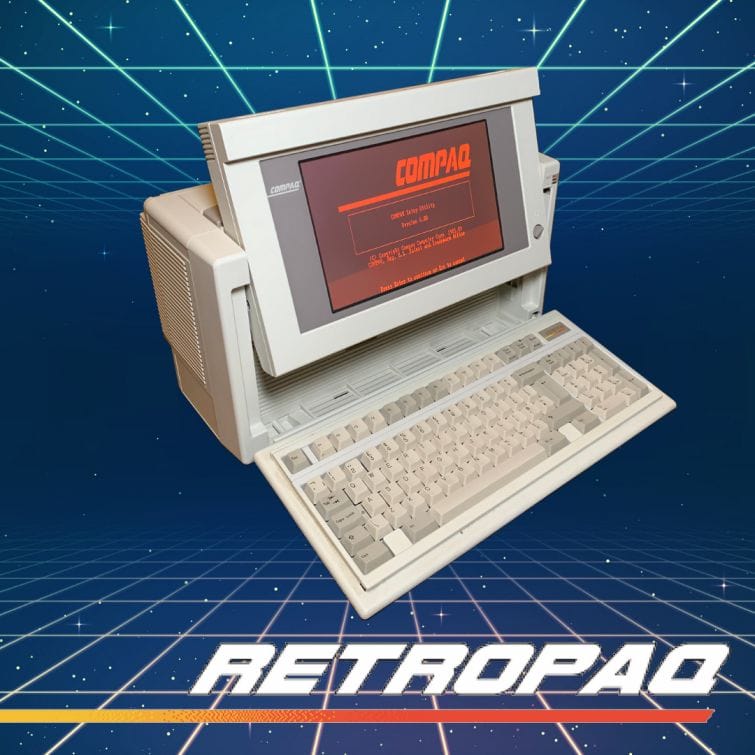
Aside from the look, however, the gas plasma display is a miracle of creative engineering. What is so miraculous, you may ask? Well, consider these fundamentals:
- A gas-plasma display is basically a large, flat, very sophisticated neon gas lamp. The display unit’s light is generated (discharged) by the same principle that gives neon signs their glow and distinctive orange color.
- The glow given off by gas-plasma lamps has been used as display technology as pixels since 1927, way before digital computers were invented (more on that below).
- The picture quality is superb, especially when considering the time period when these displays were used in portable computers and industrial equipment. Gas plasma displays were advertised as having a contrast ratio of 100:1 – outperforming LCDs from the early ’90s. Furthermore, the wide-viewing-angle and lack of blur (fast response time) made them ideal for high-end computer & GUI use.
- Plasma displays were expensive – opting for the plasma screen option on a laptop could have added about US$500 – US$1000 to the sticker price over LCD.
What is gas-plasma and how does it work?
The glow given off by a gas-plasma display is the same glow that is generated when a neon (gas-plasma) bulb is turned on; electricity is passed into a sealed space that contains primarily neon gas – other gases can also be used, but it is neon that gives an orange glow.
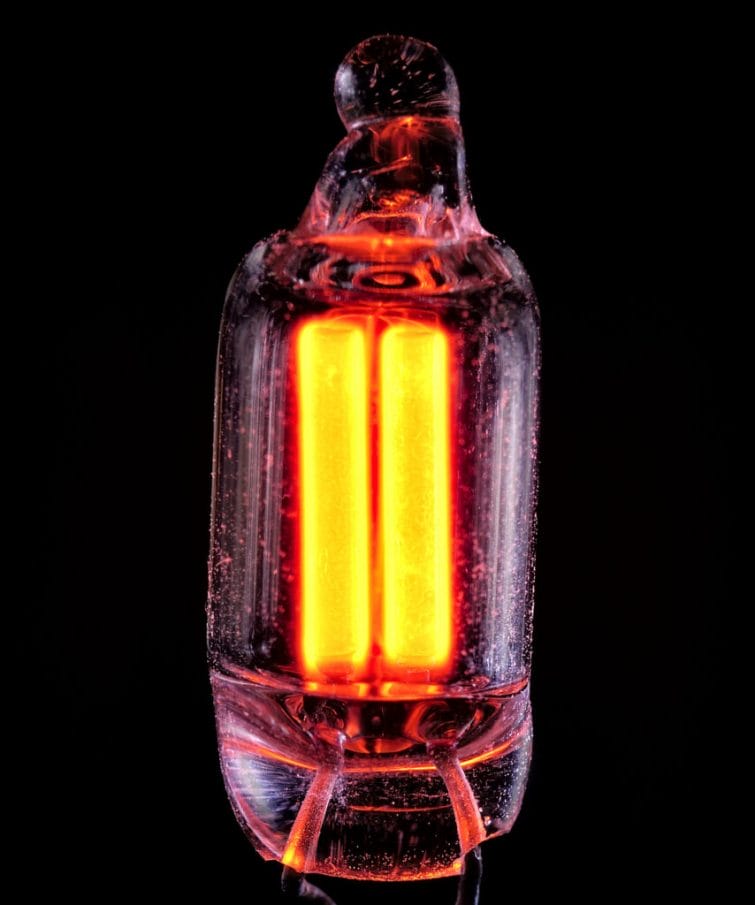

When an electric current is applied to the positive and negative terminals, sufficient energy is provided to remove an outer electron from the neon atoms (ionization). The positively charged neon atoms are then attracted to the negative terminal, and the free electrons are attracted to the positive terminal. These charged particles (ions) move and bump into other atoms and generate heat and light. Each atom bumping into an electron produces one ion and two electrons, resulting in a chain reaction (aka Townsend Avalanche).

This luminous electric ark, aka, “plasma,” is electrically conductive; as it is formed, the circuit is completed. Once plasma occurs, a lower voltage is supplied to keep the chain reaction going, and to turn off the bulb, the circuit is broken (eg., through a switch).
How is gas plasma discharge used in a display?
A gas plasma display can be thought of as thousands of miniaturized gas plasma lamps arranged together into a grid or a “matrix”. Each tiny “bulb” is a cell (or pixel) within the screen and is full of neon gas.
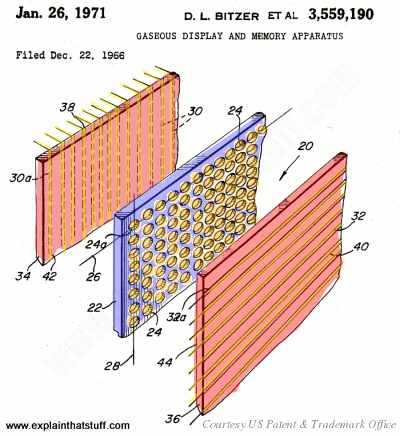
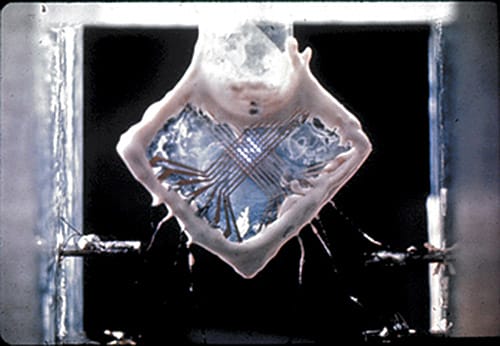
Cells are electrically connected via silkscreen electrodes that run to the edge of the glass screen. The control of these pixels is directly controlled by the driver card – a PCB that typically is attached to the plasma display unit itself.
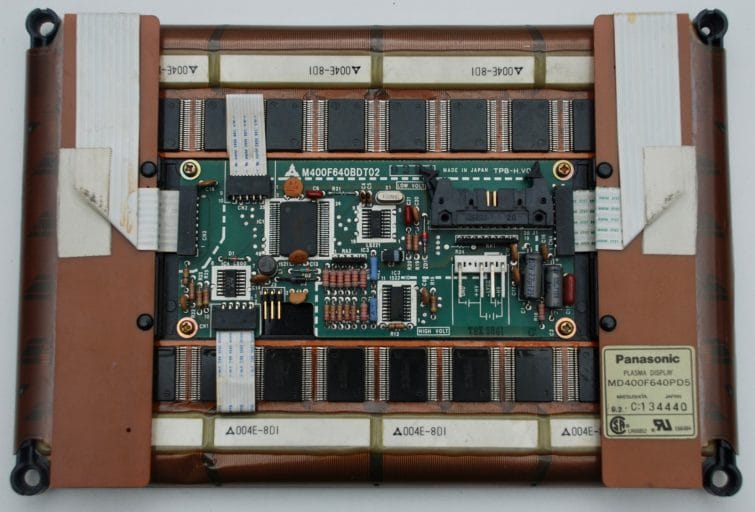
This driver card interprets the computer’s output signals to switch on and off specific pixels on the screen and generates the high voltages needed for plasma to occur through an inverter.
Noteworthy Gas Plasma Displays
1927 Bell Labs Neon Gas Plasma Display for Mechanical Television
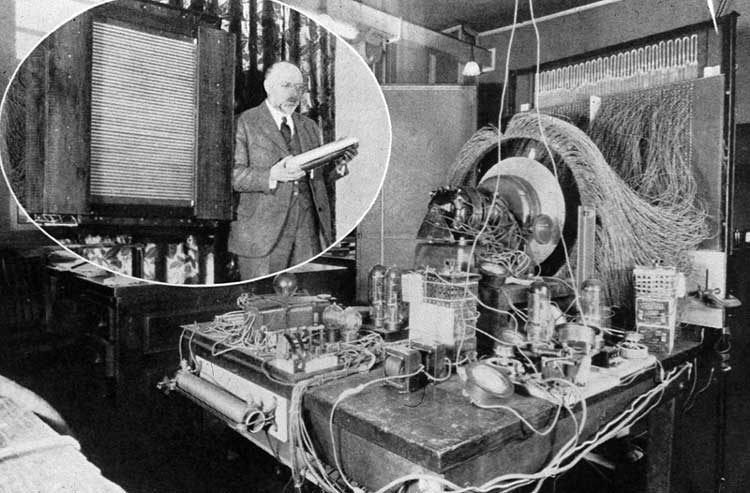
Some might consider it a bit of a stretch to say that a matrix of bulbs arranged in a grid can be called a screen. But, since each bulb can be controlled (it can be on or off), it acts much the same way as pixel does on a modern display. Therefore, if you have enough bulbs (pixels) in a large enough grid, you can manipulate them to generate the appearance of an image – and this is what took place in 1927.
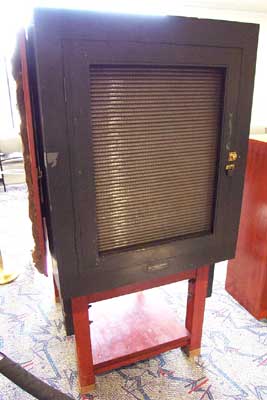

Bell Labs had developed a mechanical television (itself a fascinating device,) but equally important, they had also developed this rudimentary screen to display a moving image. It is not known how “clear” the image was on the screen as no photos exist of it in operation. However, descriptions indicate that the audience was able to discern individuals who were being shown on the screens. Incidentally, a similar technique of using bulbs in a grid as a display was developed in New York for “The Zipper” – a 380-foot long ribbon of 14,800 incandescent light bulbs used to display news stories as moving text.

1967 PLATO (Programmed Logic for Automatic Teaching Operations)

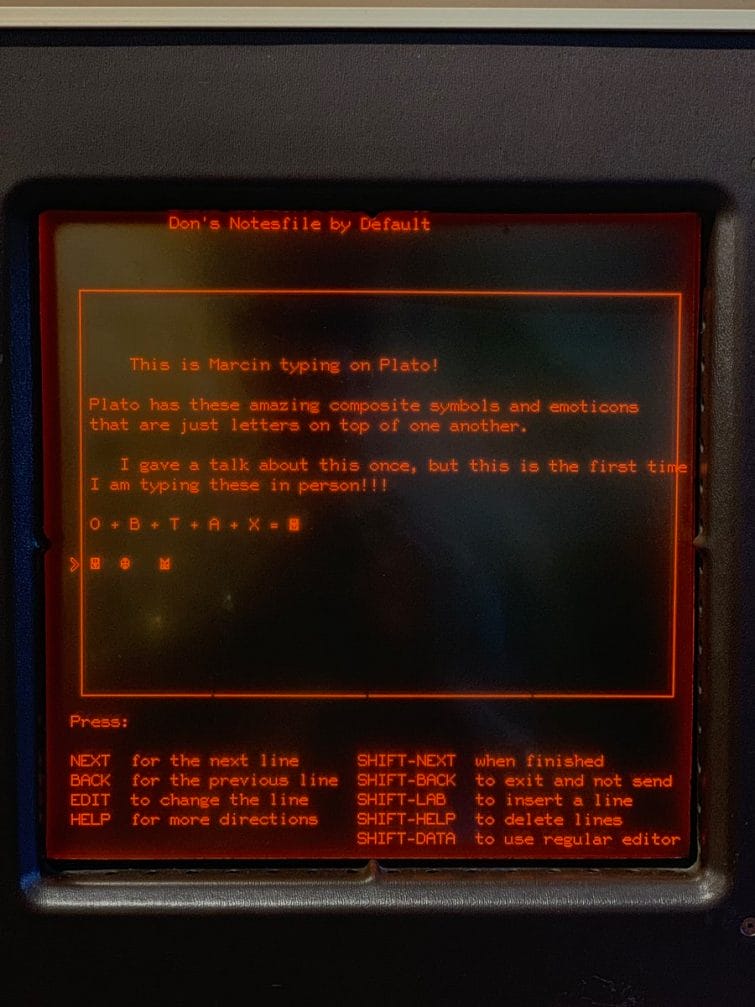
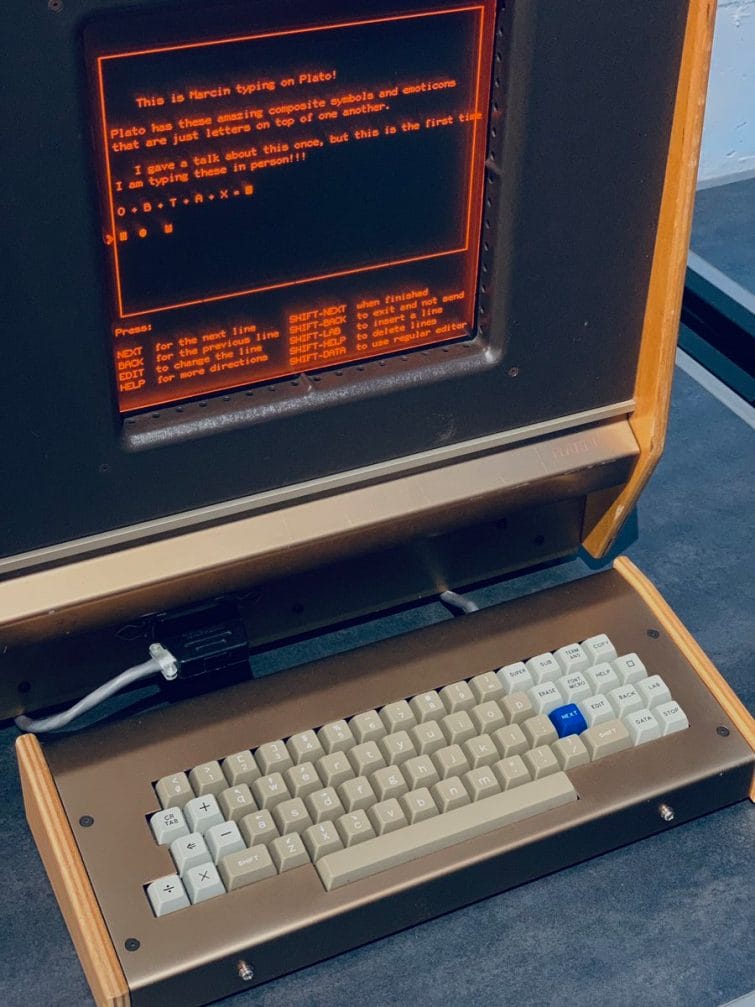
PLATO was a computer education system developed at the University of Illinois in 1960 using mainframes and CRTs. Its development heralded what was to come in multi-user computer systems: forums, message boards, online testing, e-mail, chat rooms, picture languages, instant messaging, remote screen sharing, and multiplayer video games – all can be traced back to the PLATO system. By 1967, researchers took the system a step further and had perfected the first plasma display by sandwiching a mesh of electrodes between 2 plates of glass filled with neon. The first commercial gas plasma displays (“Digivue”) were manufactured by Owens-Illinois in 1971, a prominent glass & CRT tube manufacturer for use in the PLATO system. These early gas plasma displays were A/C powered in order to take advantage of how the plasma behaved – it could be used as a type of memory for the display. This eliminated the need for expensive memory ICs (RAM) to drive the display, lowering costs, making the plasma display competitive against CRT technology.
1975 SAI Plasmascope
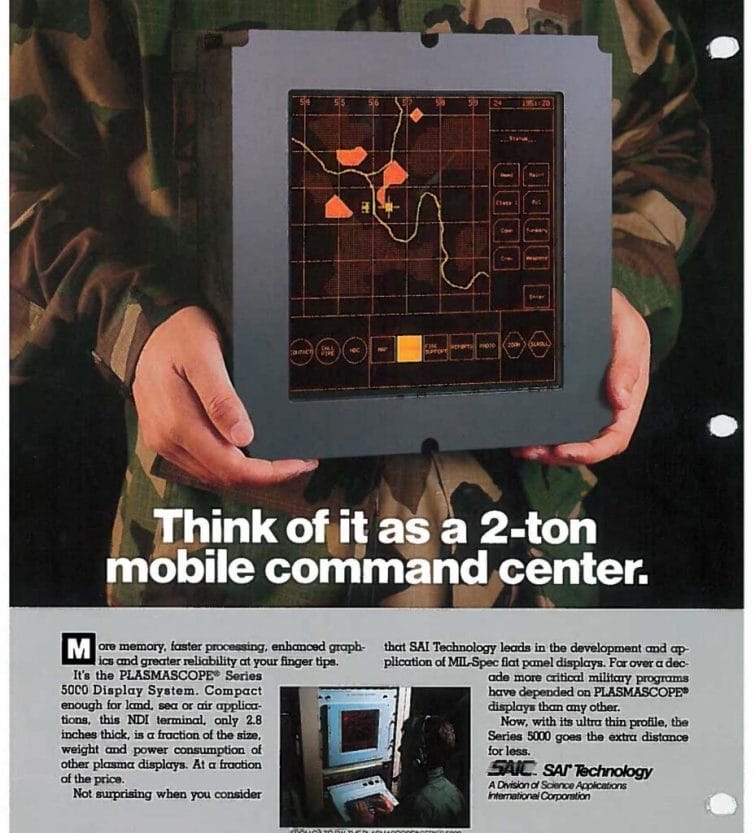
As with most new technologies, the military was involved in the development of gas-plasma. In 1975, SAI Technology Company unveiled “Plasmascope” an “inherent memory display terminal” for military use. Selling points included a lack of jitter and flutter that CRTs exhibited in tough conditions, and that there was no maintenance needed on the unit. These displays were sold at “under US$20,000 each in [order] quantities of over 100 units“, and were used in numerous military applications including ground launch cruise missile control systems.
1983 IBM 3290
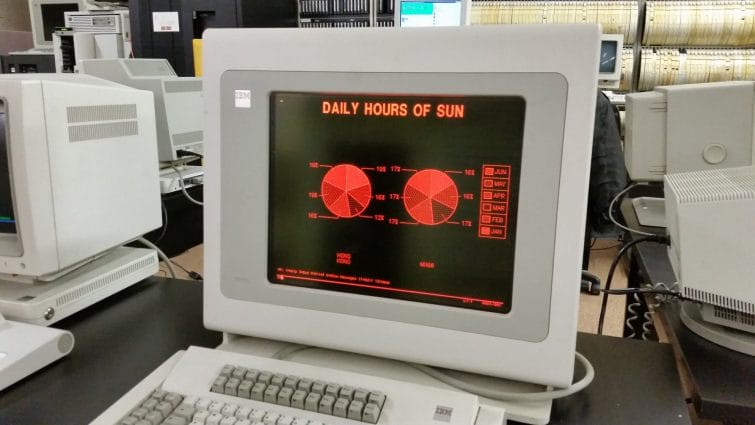
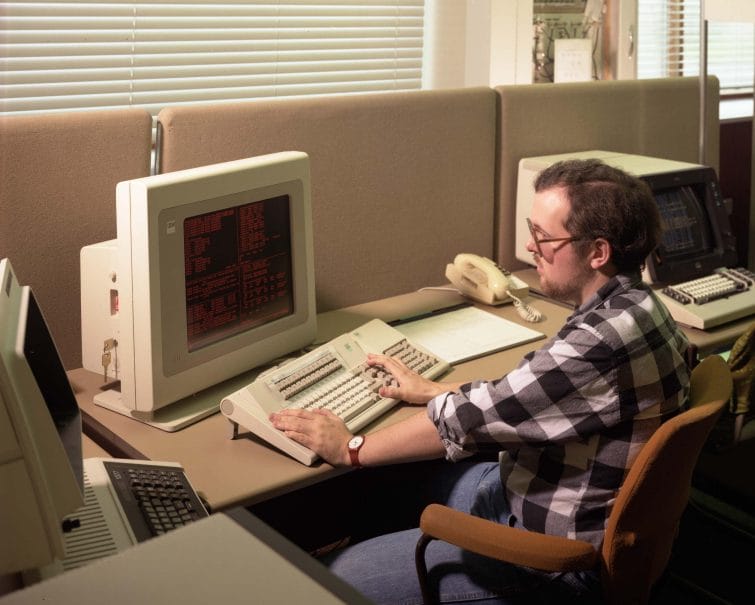
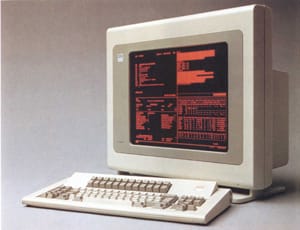
Before laptops, portables, and personal computers took off, IBM had already developed and utilized plasma display technology for its mainframes and terminals. The IBM 3290 was a high-function, large capacity, plasma-panel display station attached to a 3274 Control Unit, and, like the PLATO, the plasma display was used as a type of memory for the screen. A member of the 3270 Display System family, the 3290 could display up to 9,920 alphanumeric characters in multiple-screen format options for entering data into and retrieving data from mainframe computers such as System/370 Processors, 4300 Processors, 9370 Processors, and 8100 Information Systems.
1985 Gridcase 3
Made with an indestructible magnesium-alloy case, the Gridcase 3 by GRiD Systems Corporation was a heavy-duty rugged laptop used by the military, governments, and fortune 500 companies. It featured an 8086 based CPU and a 640×400 gas plasma display. The display could support 25 lines and 80 columns of text. These bad boys were expensive – setting you back a cool US$4350 in 1985 (equivalent to over US$10,000 in 2020).
1986 Toshiba T3100
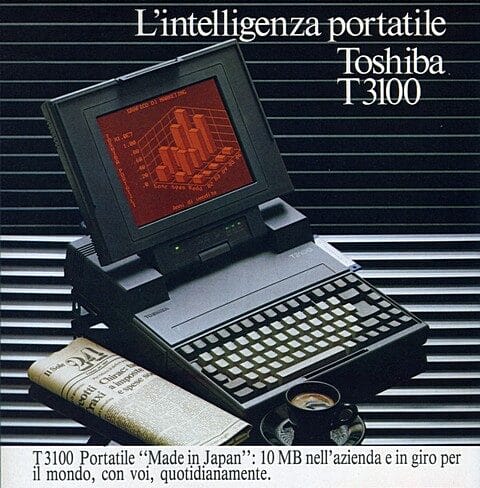
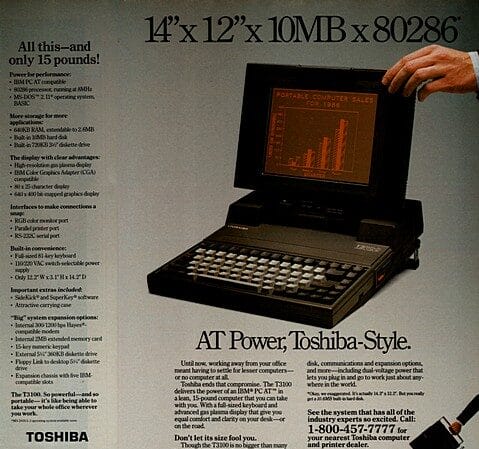
The Toshiba T3100 was a 286-based clamshell portable and is noted as being the first IBM “AT-class” portable. It was CGA compatible with its 640×400 gas plasma screen and could also support a special T3100/AT&T 6300 640×400 high-resolution graphics mode. Reviewers at the time praised the T3100 for its exceptionally clear and legible display and relatively light weight (for a portable).
1986 Compaq Portable III (CGA)

Compaq released the Compaq Portable III to replace it’s gigantic CRT-based Compaq Portable II – and it was a great commercial success. Featuring a 640×400 gas-plasma screen that supported CGA and MDA modes, this 286 based computer was well built, and well-received by critics despite it’s premium price tag.
1987 Compaq Portable 386 (CGA)
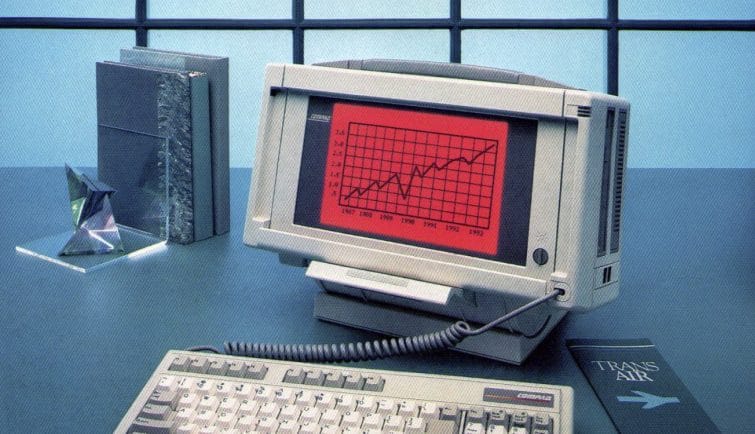
The Compaq Portable 386 was released a year later and was an upgrade of the Compaq Portable III (above). It featured a 386 CPU; making this little lunchbox computer the fastest portable computer when it was released. It retained the same 640×400 gas-plasma screen that supported CGA and MDA modes as the Portable III, which unfortunately hastened its obsolescence as VGA became the new standard.
1989 Toshiba T3200SX
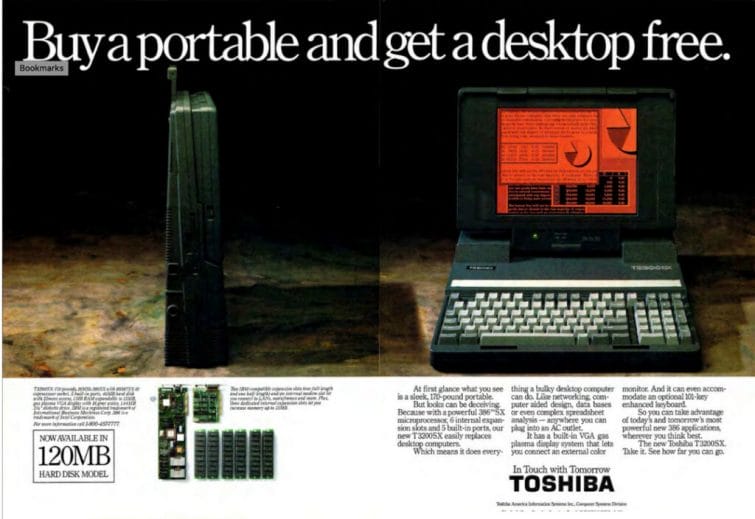
Toshiba’s T3200SX pushed the laptop form factor to its limits. This 17.5-lbs (8 KG) portable computer had a clamshell form-factor like a modern laptop, but it is unlikely that anyone placed one of these knee-crushers on their laps. Performance-wise, however, the Toshiba T3200SX was a heavyweight screamer, performing more like a desktop computer with it’s VGA graphics, 16 shades of “grey,” and 386SX CPU.
1990 IBM P75
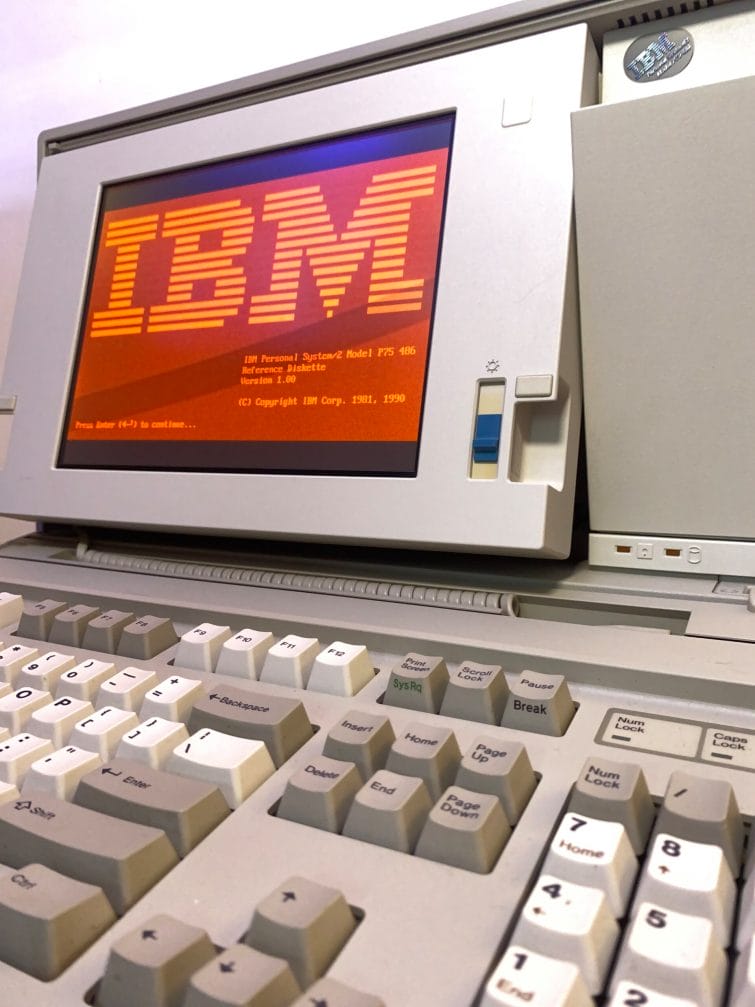
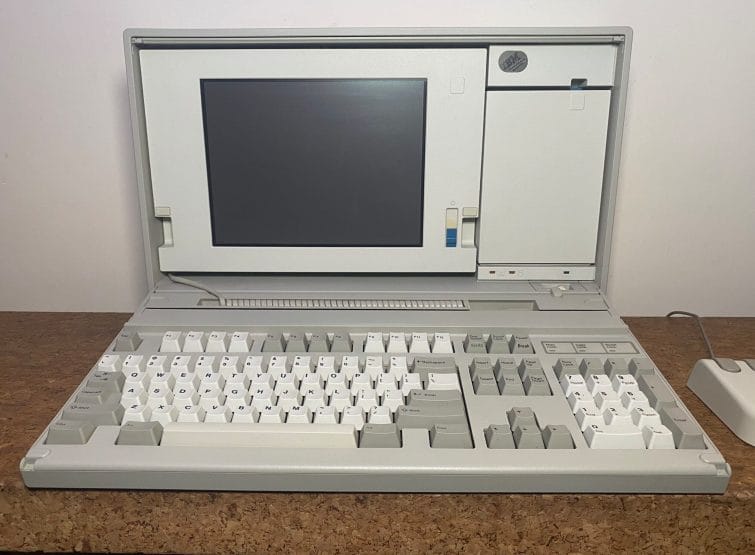
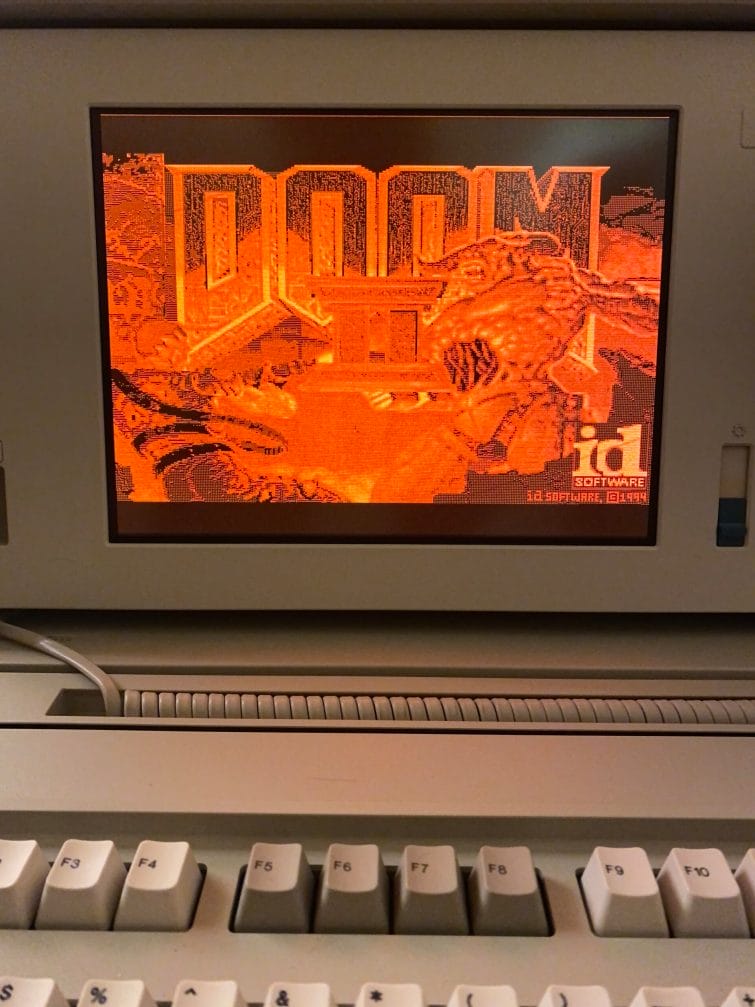
The IBM P75 and its younger brother, the IBM P70, were both gas-plasma portables that sported a 640×480 VGA gas plasma screen, which supported 16 shades of “grey”. These machines were quite advanced for the time and were referred to as “portable servers” with the IBM P75 being the first portable 486-based computer available for sale in the US. However, their size, weight, and cost prevented them from being widely adopted.
1992 Toshiba T4400SX and Toshiba T6400DX
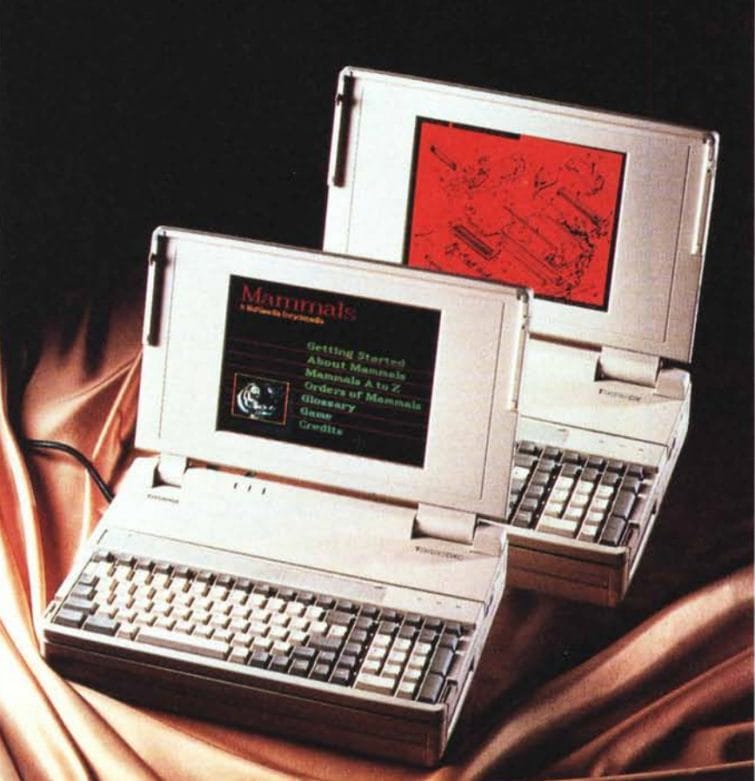
The Toshiba T4400SX and the Toshiba T6400DX were among the last consumer laptops/portables to be offered with a VGA gas-plasma display. The T4400SX is also noteworthy for being one of the few battery-powered laptops to use a plasma display, as typically batteries of the time could not keep a power-hungry gas-plasma display running for long.
Then, in late 1992, the IBM Thinkpad 700c was released – one of the first mass-market laptops with an active-matrix thin-film-transistor (TFT) display. Active-matrix TFTs mitigated the ghosting problems on older, passive-matrix color displays. This was the nail in the coffin for the 16-shade-of-“grey” gas-plasma as there was now no advantage – crisp, clear & portable color technology had finally arrived.
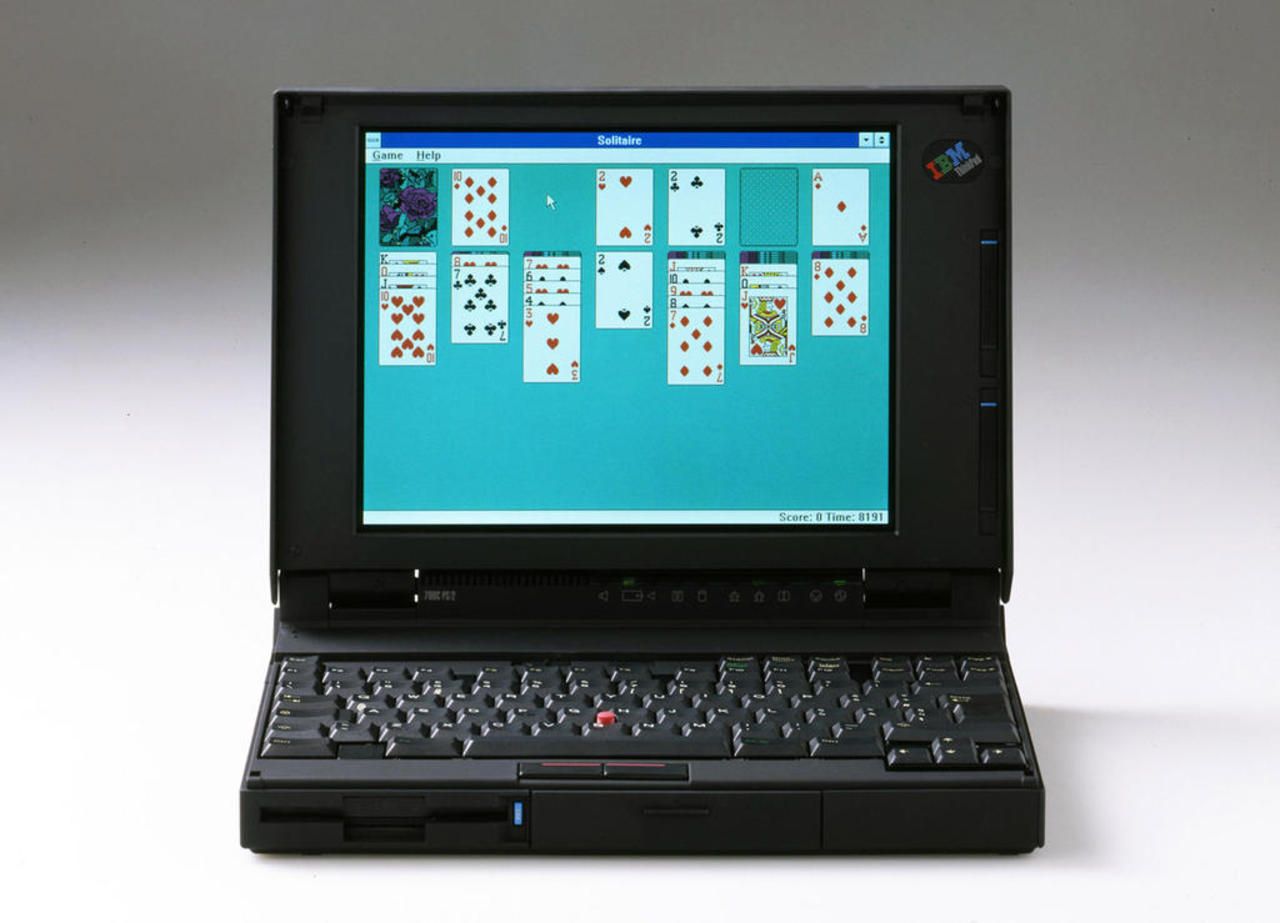
The IBM 700c and other laptops that followed got rave reviews, and understandably so – take a look below and you can see first hand how bad the ghosting and poor contrast of a passive matrix screen really was.

And that brings us to the end of our abridged history of gas-plasma screens. But wait there’s more, (of course)! Gas plasma lived on after it was phased out of laptops, as the technology went on with LCD to replace CRT televisions. CRTs just could not handle large screen sizes well; 42 inch CRTs were comically gigantic, though they arguably had better picture quality at the time.
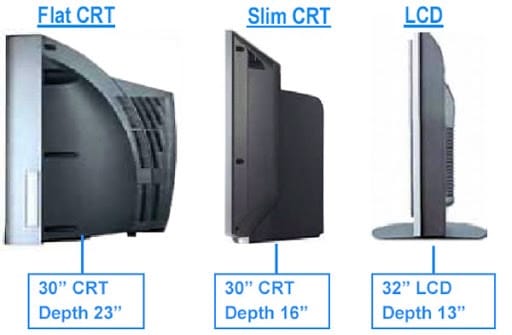
In fact, during the heyday of Plasma TVs, Panasonic came out with a 152″ plasma TV (more like a plasma “wall”), though plasma TVs couldn’t hold out forever.
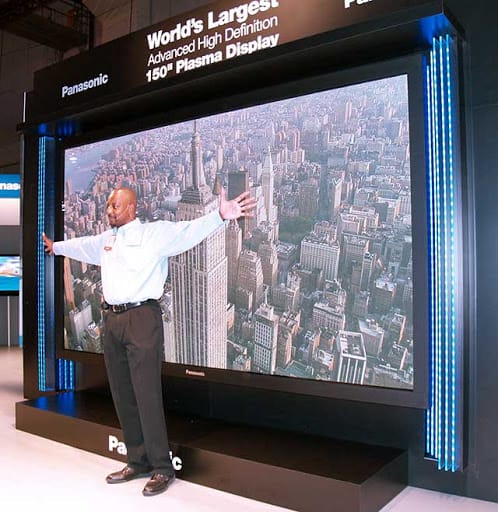
Manufacturers eventually threw in the towel, with most factories ceasing production in 2015. Plasma display technology is today considered obsolete as it has been superseded by advances made by LCD and OLED technology.
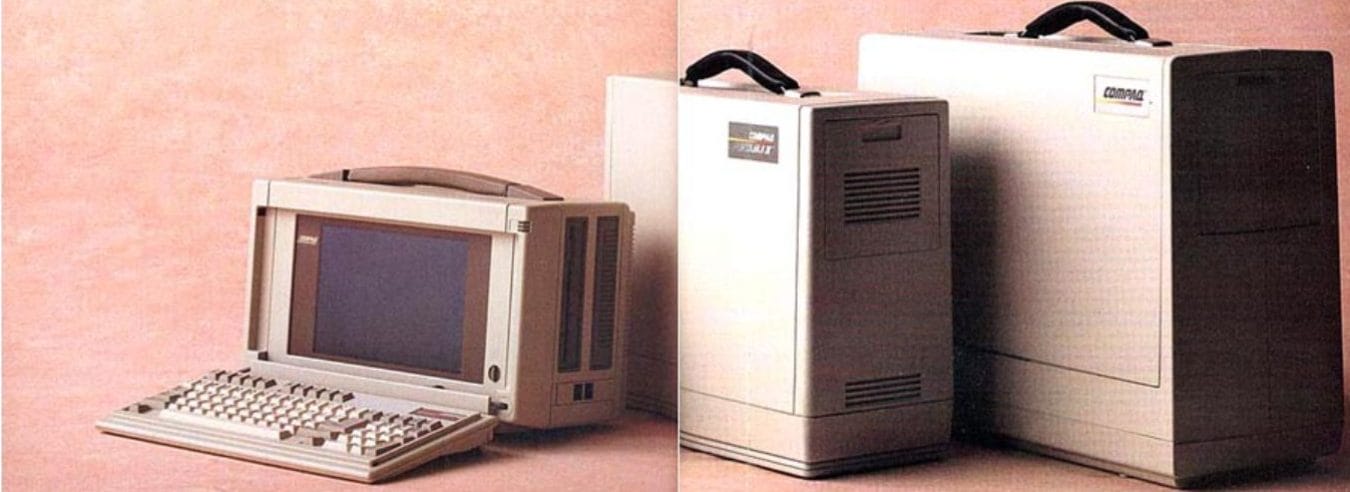

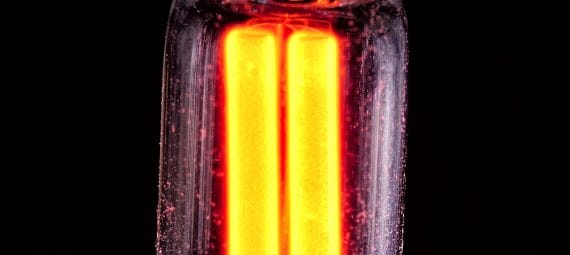
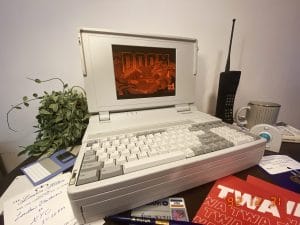
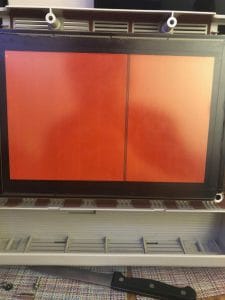
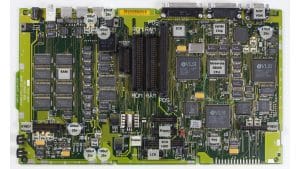

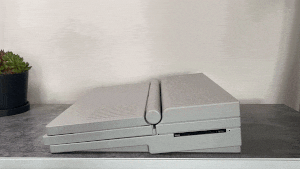
This is great information, but I am personally interested in possibilities for replacement and/or repair, and this didn’t address that at all! 🙁 I would love to buy any one of these PCs, but… I’m aware of CRT’s limitations. To be honest, it is perhaps its easier to buy an entire Compaq Portable; CP Plus, or CP 386 rather than replace just the CRT tube, I worry that I couldn’t even do this with plasma screens. Are they inevitably deteriorating at roughly the same rate? Could I find an otherwise non-functioning model and exchange screens?
Hi there, the plasma display unit is not really serviceable for a few reasons, namely, the driver ICs are very small and hard to source and also the display is sealed in glass and is in a vacuum. Your best bet is to salvage another display from another unit. There are disassembly instructions on how to remove the display panel available online. Good luck!